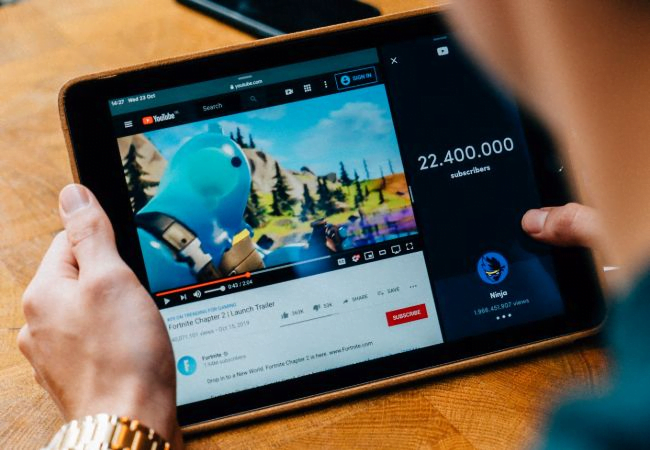As more and more people turn to YouTube as a potential source of income, it’s important to understand how monetization works. In this blog post, we’ll look at what YouTube is, how monetization works, and the pros and cons of monetizing your YouTube videos. By the end of this post, you should have a better understanding of how monetization works on YouTube, and whether it’s the right choice for you.

What Is Youtue?
Youtube is one of the most popular video sharing sites on the internet, and for good reason. It’s easy to create an account, upload videos, and start making money. In this article, we’ll walk you through the process of creating a Youtube account and understanding the various ad formats that are available for monetization. We’ll also discuss setting up an Adsense account and discussing different ways to grow your audience engagement. Finally, we’ll share some examples of successful campaigns that use Youtube to generate money. By understanding these basics, you can start making money from your videos right away!
To create a Youtube account, you first need to go to youtube.com and enter your name and email address in the appropriate fields. Once you’ve completed this step, YouTube will send you a verification email which you will need to click on in order to continue. After clicking on the verification link, YouTube will take you through a few simple steps that will allow you to create your new channel.
Once your channel has been created, the next step is to choose a title for your channel. This title will be used as the main identifier for your channel when people browse it on Youtube. Next, select a thumbnail image for your video which will be displayed in all search results when people type in your title or thumbnail keywords into Google or YouTube search engines. You can also add tags (words or phrases that describe what’s in your video) after selecting your thumbnail image if desired.
Now it’s time to add some content! Click on the Upload New Video button located at the top of any YouTube page and begin creating your first video! When uploading a new video, it’s important to keep three things in mind: quality (make sure everything looks good before uploading), content (make sure what you’re uploading is interesting enough), and length (make sure each video is between 1-5 minutes). Make sure that each section has at least one sentence explaining what it is before hitting Upload.
After uploading all of your videos, it’s time for monetization! There are two primary methods of earning money from Youtube: advertising revenue and subscription revenue via Patreon or Subscribe & Save. Both methods have their own set of rules and requirements which we won’t go into here; instead we recommend reading our full guide on how to make money from Youtube. However, we will give some general tips about optimizing videos for both advertising revenue generation as well as subscription growth. Monetization isn’t everything though – having.
Related: The Secret no one tell you to make easy money with youtube!
How Does Monetization Work?
monetization is the process of converting video views into monetary compensation. There are several ways to monetize videos on YouTube, and each method has its own set of requirements and benefits. below, we’ll take a look at the different ways that videos can be monetized on YouTube and what you need to do in order to maximize ad revenue from your videos.
First, let’s discuss how much YouTube pays for monetized videos. As of February 2019, YouTube pays out $0.10 per 1,000 views for standard ads and $2 per 1,000 views for view-through ads (VTV ads). That said, there are some exceptions – such as live events – where ad revenue is higher or lower than these amounts.
Next, what are the requirements for video monetization? In order to qualify for monetization on YouTube, your video must have at least 4 minutes of watch time and a minimum number of subscribers (at the time of publishing this article). Additionally, your video must also be eligible for Google AdSense – which is one of the main sources of ad revenue on YouTube. Videos that are part of an advertising campaign or featured content will not be eligible for monetization. Finally, make sure that your video meets all the other conditions specified by Google before submitting it for review – such as being in good quality and complying with copyright laws.
Does YouTube provide ad revenue for all videos? No – there are certain types of videos that will not generate any ad revenue at all. For example, user-generated content (UGC) will not generate any ad revenue because it falls outside the scope of what Google considers advertiser supported content. In other words: UGC cannot be sponsored by brands or sold through third-party channels like ClickBank.
Are there any other ways to make money from YouTube? Yes! You can make money through merchandising partnerships with brands or through premium memberships that give you access to additional features like offline viewing and exclusive content releases. You can also sell digital products like eBooks or courses through third-party platforms like Udemy or Teachable. Finally, you can offer live streaming services through platforms such as Periscope.
What is the difference between monetizing and sponsored content? Monetizing means that you’re taking control over how your content is presented and paid for; sponsored content happens when a brand pays someone else to promote their product in their video without having any creative involvement. Both types of content have benefits and drawbacks; it.
Related: youtube converter — converter mp3
What Are The Pros And Cons Of Youtue Monetization?
It’s no secret that YouTube is one of the most popular and well-known video platforms on the internet. With more than two billion active users, there’s a lot of potential for content creators to make a lot of money through YouTube monetization. However, it’s important to be aware of both the pros and cons of monetizing your content on this platform. By understanding these processes and strategies, you can maximize your income potential while minimizing any risks.
First, it’s important to understand YouTube’s monetization processes. There are several different ways that you can make money through this platform, including advertising, subscription services, and merchandising. Each method has its own set of benefits and drawbacks, so it’s important to review them all carefully before making a decision.
Next up is our focus on maximizing income potential through YouTube monetization. There are a number of different strategies that you can use to achieve this goal, depending on your video content and audience preferences. For example, you can use targeted ads to reach specific demographics or promote your videos across social media platforms in order to increase viewership. Analysing viewership data can also help you identify key targets for future advertising campaigns or subscription offers. However, be aware that there are also some potential risks associated with monetizing content on YouTube – so be sure to weigh them carefully before taking action!
Last but not least is tips for avoiding copyright infringement and other legal issues while still making money through YouTube monetization. It’s essential to stay up-to-date with current copyright laws in order to avoid any legal issues down the road. Additionally, make sure that your videos are properly labeled as such so viewers know what they’re getting themselves into when watching them online. Finally, keep expectations realistic when starting out with YouTube monetization – it may take some time before results start coming in!
Related: How To Download Youtube Mp3
Looking At The Advantages And Disadvantages Of Video Monetization
There’s no doubt that video is one of the most popular forms of content on the internet, with billions of views every day. And with good reason – videos are captivating, informative, and easy to consume. But like anything else in life, there are also disadvantages to video monetization. In this section, we will take a look at the basics of video monetization on YouTube and discuss some of the different ad format options that are available. We will also provide tips for getting started with video monetization and give you some best practices for optimizing your ads.
First things first – what is video monetization? Video monetization on YouTube refers to the process of generating revenue from your videos by displaying ads within them. There are a variety of different ways that you can do this, including displaying pre-roll or mid-roll ads before or after your videos respectively, or inserting banner ads into your videos. Additionally, you can also sell premium ad space directly within your videos – which would give viewers more opportunities to interact with your content in various ways (such as subscribing or voting).
Now that we’ve covered the basics of how video monetization works on YouTube, let’s take a look at some different types of ad formats available and their respective revenue streams. The three most common formats used for advertising on YouTube are pre-rolls (ads that play before a user starts watching a video), mid-rolls (ads that play while someone is watching a video), and post-rolls (ads that play after someone has finished watching a video). Pre-rolls typically generate the highest rates because they have high clickthrough rates – meaning people who see them actually click through to watch the rest of the ad. Mid-rolls tend to generate lower rates because they have lower clickthrough rates but higher conversion rates (meaning people who watch them actually convert into paying customers). Post-rolls tend to generate slightly lower rates than either mid-rolls or pre-rolls due to their lower clickthrough rates but higher conversion rates.
Now that we understand how ad formats work and what types of revenue they generate, it’s time to get started monetizing our channels! To start off with, always make sure you’re complying with all platform policies related to advertising – such as age restrictions or minimum view threshold requirements. Also make sure all your videos meet Google’s quality standards in order for them to be eligible for advertising: low resolution images/videos won’t allow viewers enough time to read/watch an ad before.
Related: Outube The Alternative You Didn’t Know Is Free
In Short
To summarize, YouTube monetization is a great way to make money from your videos, as long as you understand the rules and requirements. By following the tips outlined in this blog post and optimizing your videos for monetization, you can maximize income potential while minimizing any risks associated with it. The key is to stay informed and up-to-date with current copyright laws so that you can protect yourself legally while still making a profit. Now that you understand how YouTube monetization works, why not start taking advantage of it today?
